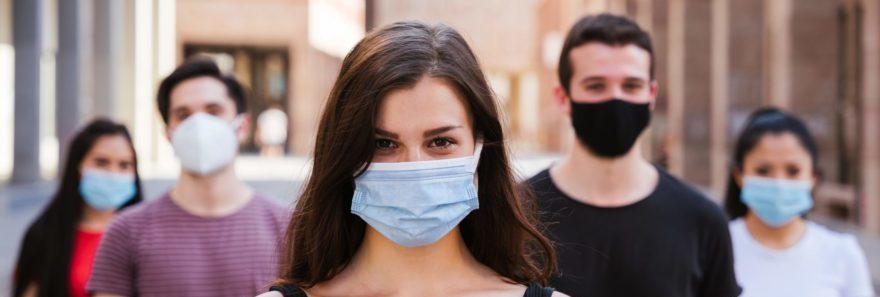As face masks are likely here for awhile longer, regardless of first vaccine doses, York University researchers have tested several materials to find which one is more efficient at filtering aerosols and more breathable for use as a middle layer or filter for cloth-based masks.
The researchers looked at the characteristics of various, readily available and inexpensive materials, and put them through aerosol filtering efficiency and breathability testing with the intent to find suitable materials for homemade mask inserts.
They found that adding an appropriate non-woven material as an insert filter can significantly improve the performance of cloth-based masks and that there are alternatives to non-woven polypropylene that work equally well if not better.
The materials tested included woven fabrics, such as prima cotton, woven cotton, flannel and microfiber sheets, and non-woven materials, including sew-in interfacing, polypropylene, baby wipes and Swiffer wipes using single and multi layers. They also tested various industrial wipes and rayon/polyester gauze, as well as two different surgical masks, which provided a benchmark for their results. In addition, they tested materials treated with a water-repellent coating and fabrics that contained seams.
“Overall, we found that polypropylenes, Swiffer and the rayon/polyester blends, such a non-woven gauze, provided the highest filtration efficiency and breathability,” says York University Postdoctoral Fellow Leigh Crilley of the Faculty of Science who led the study with Associate Professor Jennifer Chen.
High-powered microscopes allowed Crilley and his team to examine the weave of each material before exposing them to submicron-sized particles, or aerosols close to the size of the SARS-CoV-2 virus, using industry filtration testing standards. The researchers tested how many of the submicron aerosols were captured compared to those that went straight through the material.
For breathability the research team used a pressure drop test. The higher the pressure drop, the more difficult it would be to breathe through the material. The best materials exceeded the WHO’s metric benchmark for quality.

“Doing the breathability test was equally important because if a material was found to be very efficient at removing small aerosols, but was really not breathable, then no one would want to wear that in a face mask,” says Chen. “It’s important to find a balance between the filtering properties of the material and its breathability.”
Mask wearing can not only help reduce transmission of sub-micron respiratory aerosols, but can reduce exposure to atmospheric aerosol pollution. Researching which mask materials filter submicron aerosols best can allow for rapid policy adjustments and recommendations by health agencies for personal protection.
“We chose to do this research because we felt at the time there wasn’t a lot of guidance on what actually made a good face mask and there was a need to understand which materials are good and why – what materials would give you the best protection and also reduce your transmission if you were infected. That’s what motivated us,” says Crilley.
The research was published recently in the journal Environmental Science: Nano.


